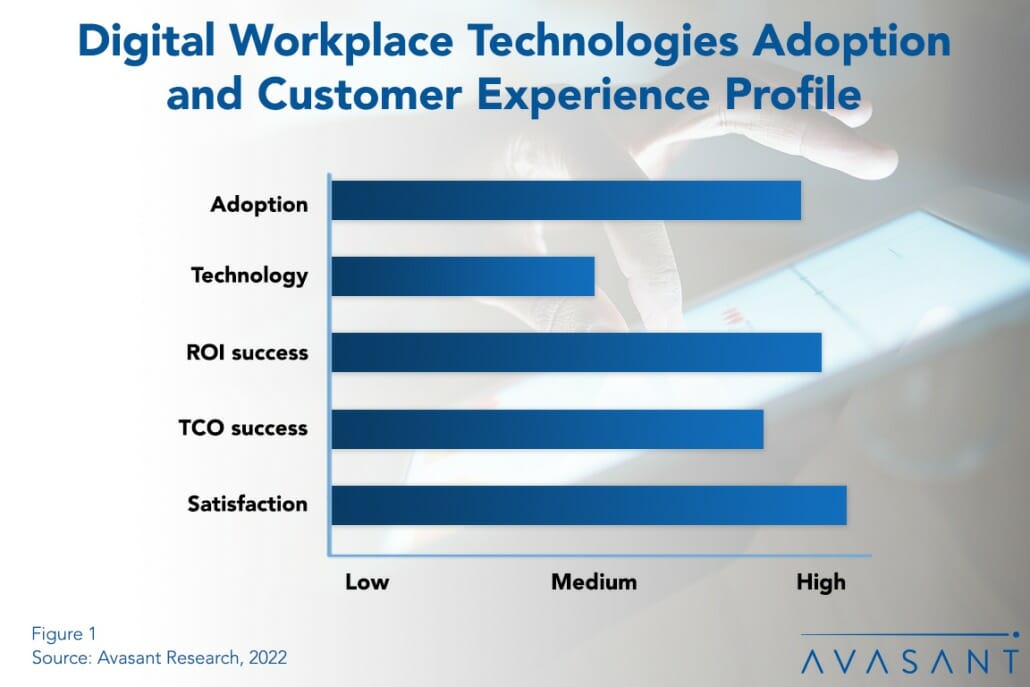Over the past two years, pandemic lockdowns led to a huge boost in the adoption of digital workplace technologies to enable remote work. But even though workers are returning to offices, organizations are not returning to old ways of working. The digital workplace is here to stay.
Digital workplace technologies allow users to communicate and work together at a distance, whether through virtual meetings, marking up shared documents, or maintaining shared folders. They also enable the optimization of work processes through automation to increase productivity, reduce errors and repetition, and improve output.
As seen in Figure 1 from our full report, Digital Workplace Technologies Adoption Trends and Customer Experience, digital workplace technologies have high adoption, ROI, TCO, and satisfaction rates. The only metric with a moderate rating is investment. Organizations realize the benefits of investing in a digital workplace environment as information is now at the fingertips of every employee, and office footprints are small er and less expensive.

The metaverse is an emerging environment to establish a digital workspace. A metaverse workspace is a shared virtual workspace in which participants can collaborate for common objectives. It is driven by immersive communications technology such as virtual and augmented reality or at least robust video and audio communications options. The interest in the metaverse workspaces lies in the ability of a metaverse to break down the walls between the physical, augmented, and digital worlds.
However, new technologies or processes can sometimes be accompanied by organizational resistance to change. One of the key challenges is overcoming user hesitancy when new tools and technologies are introduced. In some cases, getting workers even to use some of the tools—such as maintaining the skills database or using shared documents instead of email attachments—can be a challenge. Therefore, in adopting the technologies, organizations must focus on the people using them. The employee experience must be the center of digital workplace strategies.
“While there is a surge in the adoption of digital workplaces due to positive business outcomes, there are implementation challenges,” said Tracell Frederick, research analyst/editor for Avasant Research, based in Los Angeles. “It is a good idea to pair the adoption of digital workplace technologies with HR/human capital management to help maximize employee success.”
Our full report quantifies the current adoption and investment trends for digital workplace technologies, as well as the benefits driving companies to expand their implementations. We assess these trends by organization size, and sector, and look at the ROI and TCO experiences of organizations that have adopted these technologies. We conclude with practical advice for those planning new investments in digital workplace technologies.


